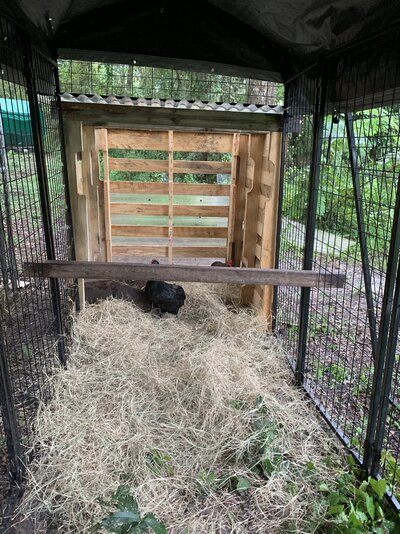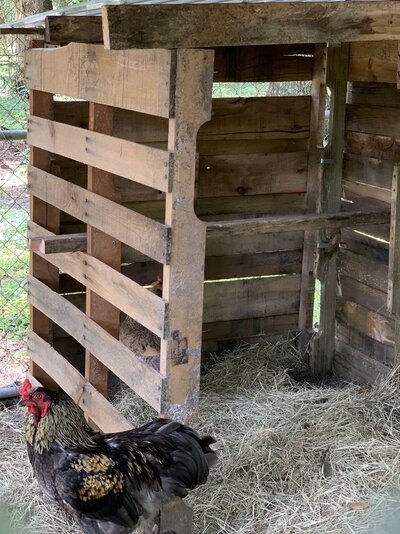- Feb 23, 2016
- 69
- 25
- 111
Humm. I like these ideas and may be able to fashion something myself. Hubby is DONE with chicken projects! What type of wiring do you suggest, and what diameter on the pvc or poling materials?
Follow along with the video below to see how to install our site as a web app on your home screen.
Note: This feature may not be available in some browsers.
The tractor that is being referred to here is a light weight covered structure either on wheels or skids that you can move around in your yard. A chicken tractor can be very light weight. (Called a tractor, cause when chickens are in it, they can actually be used to prepare the ground much the same way a tractor would). They till the soil if left in one place for a bit, while adding fertilizer and eliminating insect pests: something that even the most expensive tractors can't do without extra materials being added.I don't have the funds to purchase a tractor or even a riding lawn mower at this time. Add to that the fact that here in Central Texas the ground is pretty rocky and uneven...hard to safely maneuver in that terrain. I may try the idea of setting up just a circle of light wire as mentioned before. But my issue still remains: how to get them from the run area to the temp. fenced area. And yes, I'd be close to keep my eyes open. So, how to get them from point A to point B. Not sure they'd follow my lead at first to get to wherever, but may just try it. Would feel much better with some safer option, tho. Thanks!
Not motor tractor, chicken tractor. I'm in Central Texas, too - I have some of them I've put together that act as permanent coops for small groups of chickens. Just be sure to protect the perimeter from digging predators at night.I don't have the funds to purchase a tractor or even a riding lawn mower at this time. Add to that the fact that here in Central Texas the ground is pretty rocky and uneven...hard to safely maneuver in that terrain. I may try the idea of setting up just a circle of light wire as mentioned before. But my issue still remains: how to get them from the run area to the temp. fenced area. And yes, I'd be close to keep my eyes open. So, how to get them from point A to point B. Not sure they'd follow my lead at first to get to wherever, but may just try it. Would feel much better with some safer option, tho. Thanks!
I'll check into that, but seriously, just don't have the funds to do any purchases like that now, unless it's next to free. But may try some of the things mentioned earlier. If I can connect the portable fencing to the gate opening, I may be able to slowly drag to various areas around the yard. Question and suggestion needed: here in Central Texas, we don't have dirt...we have limestone below about 1 inch. How to secure fencing posts??? You really need a jack hammer or a really good pick ax, which I physically cannot handle (5'1" petite woman in her late 50's--where did the time go??Don't feel that old but with a bad spine, don't want to tempt fate, KWIM?)

Another money saving tip I just remembered.....
If you want to feed mealworms, etc look into raising your own. No need to shell out $ each week, they're very easy to raise.
 photos below.
photos below.

